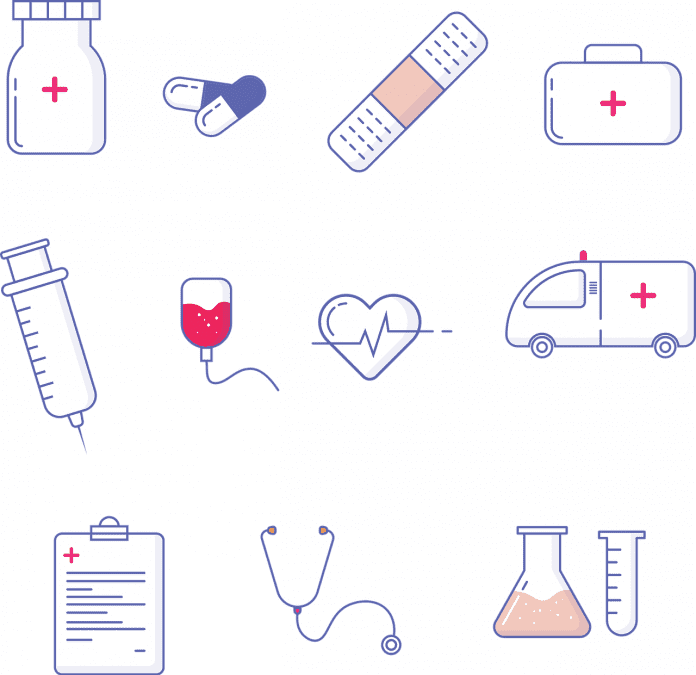Last Updated on March 10, 2025 by Bisma Sehar
The core of every healthcare organization is to provide high-level care to patients cost-effectively. One of the ways a hospital can do this is by managing, maintaining, and collecting data through an effective administration. This gives them an insight into patient analytics, as a result of which individual healthcare sectors can make informed decisions and provide the care patients are searching for.
Therefore, as a healthcare manager, your job is pivotal in taking patient care to the next level. Over 80% of American patients say quality customer service is essential while choosing a hospital. So to ensure every patient leaves satisfied. Here’s what you need to do:
Table of Contents
1. Provide hospital staff with better training
New hospital staff members and those arranged in teams need to get trained. This aligns them with the hospital’s protocol and ensures they carry out their tasks thoroughly. As a clinical manager, you can arrange for these training programs, which may walk through maintaining patient privacy, customer service, hygiene standards, and using the hospital’s database.
Therefore, to lead with change, it’s best to get a master’s degree as a hospital administrator to better understand your position in the healthcare hierarchy. An online MHA will provide you with the relevant knowledge to help you with your job. You also develop an understanding of ethics in medicine and an insight into healthcare policy.
2. Acknowledge the language and literacy barrier
Patients may hesitate to seek care, especially if they don’t speak the native language. At the same time, patients may not be literate enough to understand hospital policies. You can help bridge this gap by identifying the most common languages spoken in the region and incorporating them into the hospital’s database.
For instance, over 60% of Americans speak English, while the rest speak other languages like Spanish. By introducing another language into the system, you can print documents, provide a language option on the website, and even hire bilingual medical practitioners. There are also services like Language Scientific that can give the hospitals translating resources. For patients with low literacy, you can appoint medical practitioners and hire assistants to help them out with their hospital visits.
3. Integrate modern technology
Technology has become the crux of a successful healthcare system. Tools like Augmented Reality (AR), Virtual Reality (VR), and blockchain have become a centerpiece for collecting and recording patient data. So, for better care management of patients, technology should take precedence over old school methods like taking a patient’s blood pressure manually.
For instance, the New York-Presbyterian in New York City has developed a technologically driven space called the Clinical Operations Center. This space uses AI to monitor patient conditions allowing nurses to remotely watch over patients and respond when they pick up signs of a patient crashing. Consequently, it reduces the number of patient deaths, medical mistakes, and delays in providing critical care.
Another top-tier example involves using 3D technology to leverage healthcare. The Cleveland Clinic uses 3D printing to develop airway stents for patients to help them breathe. In contrast, other healthcare industries are deeply involved with producing custom surgical instruments, casts, bone implants, and prostheses, all by printing. This will revolutionize the way a hospital provides care to patients.
Following these examples, you can also propose more machines and automation to become a part of your hospital as a healthcare manager. If you cannot start big, try starting by digitizing patient data and swapping notepads for electronic health charts. You may also use an electronic messaging service like Cureater to connect medical practitioners with patients to discuss their ailments, remind them about appointments, and notify them of the vital paperwork they need to bring.
4. Establish effective communication channels
Communication can be a massive challenge in hospitals where different departments are operating at a time. This can overwhelm patients and cause medical practitioners to overlook asking essential questions while checking patients. To remedy this ordeal, start by encouraging medical practitioners to use pagers and specific apps on their phones to stay in touch with their colleagues.
Inform professionals understand standard abbreviations, codes, and symbols when charting patient information. This removes ambiguity and confusion from the patient’s recorded data. Instead of manually asking a patient to fill out a form, a kiosk can enable them to provide valuable details, leave a review and search for the doctor they want to see.
Check in with medical practitioners to ensure they understand the hospital’s policies and ensure these rules are available for patients to read. Communication also includes double-checking with a patient about the information they provide, discussing and asking the patient to repeat instructions, and focusing on informed consent. This reduces medical errors drastically.
5. Prevent unnecessary emergency room visits
According to the CDC, over 130 million Americans visit the ER annually, with roughly 30% injuries-related cases. This puts a tremendous burden on healthcare and makes it challenging for patients with critical conditions to get immediate care. However, patients can learn what constitutes an emergency through education and guidance. They should get pamphlets detailing critical cases, receive guidance from healthcare practitioners, and specific information on when they should visit the ER. Information like when a fever is too high, what are symptoms of a severe illness, when should an injury get looked at by a doctor all need to be a part of this education process.
If a non-emergency patient still comes to the ER, the staff should guide them to a general physician. You may also promote personal health triage applications and use devices like the smartwatches connected to their cellphones to track their health status. Telehealth is another lucrative option patients can explore to get online consultation instead of dropping by the hospital. Telehealth involves discussing a patient’s health through their portal, assessing their condition, and recommending treatment that a patient can manage independently.
Read more: Quest Food Management Services Offers Benefits That Helps You and Your Family
Conclusion
Patient care management is a crucial issue for the healthcare sector. Patient outcomes improve drastically when effective care methods are in place. Therefore, ensure you play your role in elevating high care standards. Medical recruits should get trained in basic hospital policies and protocols to align themselves to their responsibilities. By remedying the language challenges, patients can feel more comfortable when they have multiple linguistic options and find the help they need.
Technology is another important factor that deserves a spot in patient care management. Automation makes it easier to treat patients more efficiently with less invasive procedures. Hospitals also need robust communication, without which it can be easy to overlook details on a patient’s health. You can also address the issue of untimely ER visits by educating patients on critical situations and encouraging tools like telehealth.
Apart from that if you want to know about Career in Emergency Management then pleease visit our Health category
















